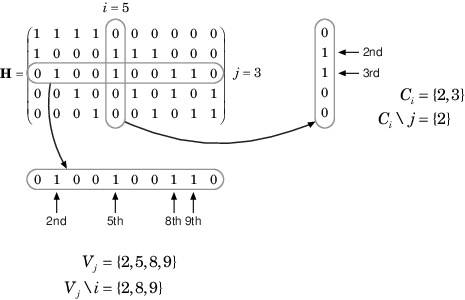wlanEHTDataBitRecover
Syntax
Description
dataBits = wlanEHTDataBitRecover(rxDataSym,noiseVarEst,cfg,userIdx)dataBits, a column vector of bits, from
rxDataSym, the equalized OFDM symbols that make up the EHT-Data field
of an extremely high-throughput multi-user (EHT MU) or trigger-based (EHT TB) transmission.
The function recovers dataBits by using the noise variance estimate
noiseVarEst and EHT transmission parameters cfg.
The userIdx is the 1-based index of the user whose data bits are
decoded by the function. This argument is not necessary when the PPDU type is non-OFDMA and
the number of users is one.
dataBits = wlanEHTDataBitRecover(___,Name=Value)LDPCDecodingMethod="layered-bp" specifies the layered belief
propagation low-density parity-check (LDPC) decoding algorithm.
Examples
Input Arguments
Name-Value Arguments
Output Arguments
Algorithms
References
[1] IEEE® P802.11be™/D5.0. “Part 11: Wireless LAN Medium Access Control (MAC) and Physical Layer (PHY) Specifications. Amendment 8: Enhancements for Extremely High Throughput (EHT).” Draft Standard for Information Technology — Telecommunications and Information Exchange between Systems — Local and Metropolitan Area Networks — Specific Requirements, https://ieeexplore.ieee.org/document/10381585
[2] Gallager, Robert G. Low-Density Parity-Check Codes. Cambridge, MA: MIT Press, 1963.
[3] Hocevar, D.E. "A Reduced Complexity Decoder Architecture via Layered Decoding of LDPC Codes." In IEEE Workshop on Signal Processing Systems, 2004. SIPS 2004., 107-12. Austin, Texas, USA: IEEE, 2004. https://doi.org/10.1109/SIPS.2004.1363033.
[4] Jinghu Chen, R.M. Tanner, C. Jones, and Yan Li. "Improved Min-Sum Decoding Algorithms for Irregular LDPC Codes." In Proceedings. International Symposium on Information Theory, 2005. ISIT 2005., 449-53, 2005. https://doi.org/10.1109/ISIT.2005.1523374.
Extended Capabilities
Version History
Introduced in R2023aSee Also
Functions
wlanEHTDemodulate|wlanEHTOFDMInfo|wlanEHTTrackPilotError|wlanHEDataBitRecover|wlanNonHTDataBitRecover
